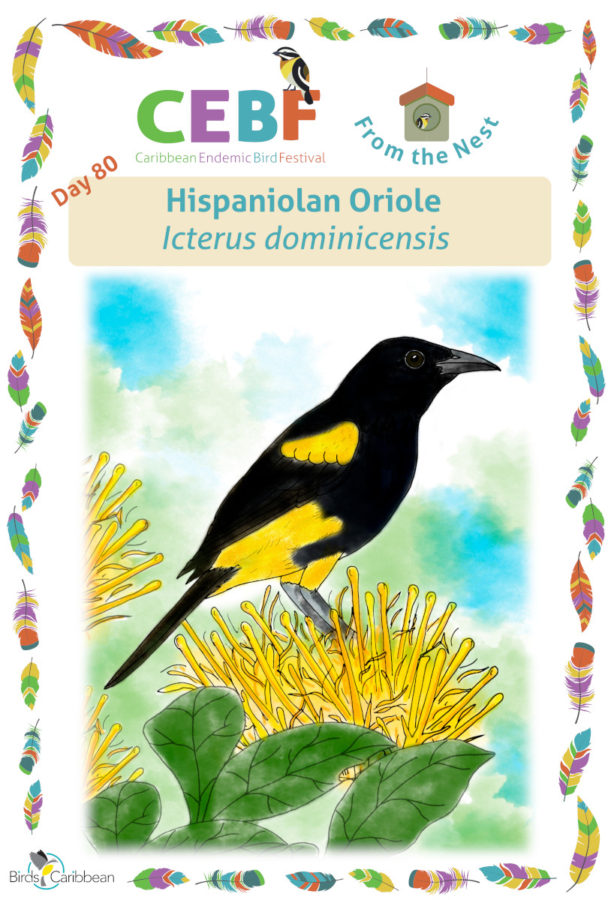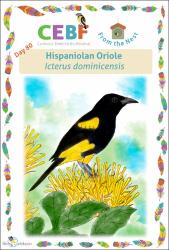/admin/item?itemID=a67d4075-10eb-4cf5-9fb0-514c0cab8cc2
Endemic bird of the day : Hispaniolan Oriole
Type of Access
OpenMaterial Type
Infographic - PosterLanguage
EnglishCollection
- Colección general [2182]
- Recursos educativos [766]
Metadata
Show full item record| Abstract: | Caribbean Endemic Bird Festival (CEBF) day 80 poster, dedicated to the Hispaniolan Oriole. One of its Dominican names is “Platano Maduro.” In Haiti, people call it the “Bananann mí.” These local names for the Hispaniolan Oriole mean “Ripe Plantain” because of its black and yellow colors, as well as the mottled appearance of juveniles – and because it is quite long and slender, just like a plantain (20 to 22 cm). In the DR it is also called “Cigua Canaria.”
Indeed, this handsome, conspicuous jet-black bird with bright yellow shoulders, rump and lower belly is a real find! It is not a common bird, restricted to more remote areas. But when you see it, it really stands out, whether it is feeding on orange maguey (agave) flowers, flying across open fields, or perched on trees in open woodlands or treelines
The Hispaniolan Oriole mostly feeds on nectar, fruit, and other flowers, but it can also be found searching for insects under palm fronds. These fronds are also where it attaches its nest, a shallow basket woven of palm fibers. The oriole’s song is an jumble of squeaky and metallic notes and whistles. Its calls include a sharp “check” and scratchy sounding “jrrrt.” The Hispaniolan Oriole is found in a variety of habitats island-wide: in highland forests of the Central Mountain range in the Dominican Republic, in shade coffee and fruit plantations in the foothills of San José de Ocoa, and also at sea level where there are palms including Las Dunas de Baní, the beaches of Miches and Punta Cana, Los Haitises National Park, and on offshore islands like Saona. It is regularly seen in the Puerto Escondido Valley on the north slope of the Sierra de Bahoruco, where abundant ficus trees and maguey provide food. Although listed as “Least Concern” by the IUCN, the population may be declining due to loss of habitat caused by increased agricultural activities in its favored habitat. Another threat is the increasing numbers of the invasive Shiny Cowbirds, brood parasites who lay their eggs in the oriole’s nests, displacing the oriole’s eggs. As a complement to the poster, a coloring sheet is included. |
| Author(s): | BirdsCaribbean
|
| Date: | 2021 |
| Published: | BirdsCaribbean |
| Citation: | BirdsCaribbean (2021). Endemic bird of the day: Hispaniolan Oriole. From the Nest (Day 80). BirdsCaribbean. Recuperado de: |
| URI: | https://bvearmb.do/handle/123456789/4007
|
Afiche / Poster



